
Annals of Dermatology
Scope & Guideline
Pioneering insights into skin health and disease.
Introduction
Aims and Scopes
- Clinical Dermatology:
Focuses on the diagnosis, treatment, and management of various skin disorders, including but not limited to psoriasis, eczema, acne, and hair loss. - Dermatopathology:
Includes studies on the histopathological aspects of skin diseases, enhancing understanding of disease mechanisms and aiding in accurate diagnosis. - Cosmetic Dermatology:
Examines treatments and interventions aimed at improving skin appearance, including laser therapies, fillers, and other aesthetic procedures. - Innovative Therapies:
Explores new treatment modalities and drugs, particularly biologics and systemic therapies for chronic skin conditions. - Patient Quality of Life:
Research that investigates the impact of dermatological conditions on patients' quality of life, emphasizing psychosocial aspects and patient-reported outcomes. - Epidemiology and Public Health:
Analyzes the prevalence and risk factors associated with dermatological diseases in various populations, contributing to better public health strategies. - Translational Research:
Encourages studies that bridge laboratory findings and clinical applications, aiming to translate scientific discoveries into effective treatments.
Trending and Emerging
- Biologics and Targeted Therapies:
There is a growing body of research focusing on biologics and targeted therapies for chronic skin conditions such as psoriasis and atopic dermatitis, reflecting advancements in personalized medicine. - Psychodermatology:
An increasing recognition of the connection between psychological factors and dermatological conditions, leading to studies focusing on the mental health aspects of skin diseases. - Microbiome Research:
Emerging studies on the skin microbiome are gaining traction, investigating its role in skin health and disease, and how it can be manipulated for therapeutic benefits. - Metabolic and Systemic Conditions:
Research linking dermatological conditions with metabolic and systemic diseases is on the rise, emphasizing the interconnectedness of skin health and overall health. - Teledermatology and Digital Health:
The rise of telemedicine and digital health solutions has prompted research into their effectiveness in dermatology, particularly in improving access to care and patient outcomes. - Innovative Diagnostic Techniques:
There is a trend towards the development and validation of new diagnostic techniques, including advanced imaging and molecular diagnostics, enhancing the accuracy of skin disease diagnoses.
Declining or Waning
- Traditional Topical Treatments:
There has been a noticeable decrease in studies focusing solely on traditional topical treatments, such as corticosteroids and emollients, as the field shifts towards systemic and biologic therapies. - Rare Skin Conditions:
Research on rare dermatological conditions appears to be diminishing, possibly due to a preference for more prevalent conditions that impact larger patient populations. - Surgical Techniques:
While still relevant, the frequency of publications focused solely on traditional surgical techniques for skin lesions has decreased, with a shift towards minimally invasive and non-surgical options. - General Dermatology Reviews:
There has been a decline in comprehensive review articles that summarize general dermatology practices, as the journal now emphasizes more specialized and cutting-edge research. - Environmental Dermatology:
Although important, studies specifically addressing environmental factors affecting skin health have decreased, likely overshadowed by more immediate clinical research topics.
Similar Journals

Acta Dermatovenerologica Croatica
Innovating Treatments, Enhancing LivesActa Dermatovenerologica Croatica is a premier journal dedicated to the fields of dermatology and venereology, published by the Croatian Dermatovenereological Society. Established in 1994, this journal has been a vital platform for disseminating research and advancements in the understanding and treatment of skin diseases and sexually transmitted infections. Although it is currently classified in the Q4 quartile for dermatology, infectious diseases, and miscellaneous medicine, it provides a unique opportunity for emerging researchers and seasoned professionals to contribute to a growing body of knowledge. Based in Zagreb, Croatia, the journal emphasizes free access to information that enhances clinical practices and scientific understanding among dermatologists and venereologists worldwide. As the journal approaches its 30th anniversary, it continues to aim for excellence in research quality, fostering collaboration, and innovating in the ever-evolving fields it represents.
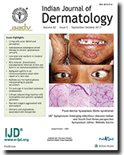
INDIAN JOURNAL OF DERMATOLOGY
Empowering skin health through open access research.INDIAN JOURNAL OF DERMATOLOGY, published by Wolters Kluwer Medknow Publications, is a renowned open-access journal that has been a significant platform for disseminating vital research in the field of dermatology since its inception in 1962. With an ISSN of 0019-5154 and an E-ISSN of 1998-3611, the journal covers a comprehensive array of topics relevant to skin health and diseases, serving both academic and clinical audiences in India and beyond. Having transitioned to an open access model in 2005, it strives to enhance the reach and impact of dermatological research. The journal is classified in the Q3 quartile within the dermatology category as of 2023 and ranks 82 out of 142 in Scopus, showcasing its contribution to the field despite competitive rankings. By fostering scholarly communication and providing a rigorous peer-review process, the INDIAN JOURNAL OF DERMATOLOGY remains a vital resource for researchers, practitioners, and students devoted to advancing the understanding and treatment of skin disorders.

Turkderm-Turkish Archives of Dermatology and Venerology
Unlocking Insights in Skin Health and DiseaseTurkderm - Turkish Archives of Dermatology and Venerology, published by GALENOS PUBL HOUSE, serves as a vital platform for the dissemination of innovative research and advancements in the fields of dermatology and venerology. With an Open Access policy implemented since 2002, this journal aims to provide free and unrestricted access to significant findings, ensuring that vital information reaches a global audience. Based in Turkey, the journal has positioned itself as an important resource for professionals, researchers, and students alike, despite currently being categorized in Q4 of both Dermatology and Infectious Diseases as per the 2023 metrics. Although it faces competition in the rankings, with a Scopus standing of #131 in Dermatology and #331 in Infectious Diseases, its dedication to advancing knowledge in these critical health areas is unwavering. The journal continually invites original research, reviews, and case studies that enhance clinical practices and foster understanding in the dermatological community.
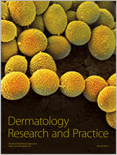
Dermatology Research and Practice
Exploring groundbreaking research in dermatology.Dermatology Research and Practice is a premier open access journal published by HINDAWI LTD, dedicated to advancing the field of dermatology since its establishment in 2009. With a respectable impact factor and a ranking of #42 out of 142 in the Scopus Medicine - Dermatology category, the journal stands in the 70th percentile, reflecting its influence and relevance in contemporary dermatological research. Based in Egypt, it provides a platform for groundbreaking studies that shape clinical practice and policy worldwide. The journal covers a wide range of topics within dermatology, including but not limited to clinical research, epidemiology, and patient care, making it an essential resource for researchers, healthcare professionals, and students seeking to enhance their understanding and contribute to the field. Emphasizing open access, Dermatology Research and Practice ensures that vital research findings are readily available to the global community, fostering collaboration and innovation in dermatology.

Journal of Dermatology & Dermatologic Surgery-JDDS
Unveiling Breakthroughs in Skin Science and SurgeryJournal of Dermatology & Dermatologic Surgery (JDDS) is a premier open access journal published by Wolters Kluwer Medknow Publications since 2018. This journal serves as a vital platform for the dissemination of cutting-edge research and advancements in the field of dermatology and dermatologic surgery. With its ISSN 2352-2410 and E-ISSN 2352-2429, JDDS strives to present high-quality articles that encompass clinical studies, innovative surgical techniques, and comprehensive reviews, thereby catering to the interests of researchers, medical professionals, and students alike. The journal has gained recognition within the academic community, evidenced by its Scopus ranks, placing it 237th out of 551 in the Medicine - Surgery category and 70th out of 142 in Medicine - Dermatology. The open access model not only enhances visibility but also encourages global collaboration and knowledge sharing in the rapidly evolving field of dermatology. Targeting the needs of diverse audiences, JDDS continues to foster an environment for scholarly communication and contributes significantly to the advancement of dermatologic sciences.

JOURNAL DER DEUTSCHEN DERMATOLOGISCHEN GESELLSCHAFT
Elevating the standard of dermatological research and practice.JOURNAL DER DEUTSCHEN DERMATOLOGISCHEN GESELLSCHAFT, published by Wiley, is a prominent periodical in the field of dermatology, recognized by its Q2 quartile ranking in the 2023 dermatology category. With a dedicated focus on advancing knowledge in dermatological science, the journal publishes rigorous peer-reviewed research that encompasses a range of topics including clinical studies, research methodologies, and innovative treatment practices in dermatology. Its impact is reflected in its Scopus ranking, where it stands at #48 out of 142 in the medicine dermatology category, placing it in the top 66th percentile. Although not an Open Access journal, it serves as a critical resource for researchers, clinicians, and students alike, facilitating the dissemination of high-quality research findings and fostering a deeper understanding of dermatological conditions and treatments. With years of convergence from 2003 to 2024, this journal remains a vital platform for scholarly dialogue and discovery in dermatology.
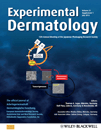
EXPERIMENTAL DERMATOLOGY
Leading the Charge in Dermatological DiscoveriesEXPERIMENTAL DERMATOLOGY, published by WILEY, is a leading journal in the fields of Biochemistry and Dermatology, with impressive rankings including Q1 status in both categories as of 2023. With its ISSN 0906-6705 and E-ISSN 1600-0625, the journal offers a reputable platform for disseminating cutting-edge research and insights into skin biology and related health issues. As a pivotal resource for professionals, researchers, and students alike, EXPERIMENTAL DERMATOLOGY includes a broad scope of topics, fostering a deeper understanding of dermatological conditions and enhancing new therapeutic strategies. The journal’s distinguished performance is highlighted by its Scopus rankings, which place it at the 91st percentile in Medicine-Dermatology and the 65th in Biochemistry. While not an open-access publication, the journal remains committed to ensuring the accessibility of crucial developments within the dermatological community worldwide, facilitating the advancement of both clinical practice and academic inquiry.
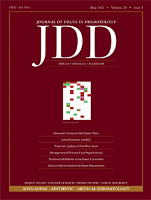
Journal of Drugs in Dermatology
Enhancing understanding of skin health and drug efficacy.Journal of Drugs in Dermatology, an esteemed publication in the field of dermatology, serves as a vital resource for researchers, clinicians, and healthcare professionals dedicated to advancing knowledge and practices in skin-related therapies and treatments. Established in 2002 and published in the United States, this journal focuses on a wide range of topics pertinent to dermatological pharmacology and therapeutics, reflecting contemporary scientific advancements and innovative approaches to patient care. With a strong presence in Scopus rankings, situating it at rank #73 within the dermatology category, and achieving a commendable Q2 quartile classification in both dermatology and general medicine categories, the journal is committed to enhancing understanding of drug efficacy and safety in dermatological conditions. While the journal maintains a traditional access model, its impact factor underscores its significance in the research community, supporting the ongoing dialogue between academia and clinical practice. We invite professionals and students alike to explore the latest findings and contribute to the progressive discourse on dermatological treatments through this important publication.
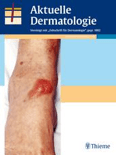
AKTUELLE DERMATOLOGIE
Illuminating the Future of Skin Science and Patient CareAKTUELLE DERMATOLOGIE is a distinguished journal in the field of Dermatology, published by GEORG THIEME VERLAG KG in Germany. With a commitment to advancing knowledge and practice in dermatological science, the journal has regularly featured research articles, reviews, and case studies since its inception in 1975 and continues to publish contributions through 2024. Despite being categorized in the lower quartile (Q4) of dermatology journals and holding a Scopus rank of #127 out of 142, it plays a pivotal role in disseminating valuable insights that support ongoing education and research in the discipline. The journal provides an essential platform for both seasoned professionals and budding researchers to share their findings, explore emerging trends, and discuss clinical practices, all while serving the needs of an evolving medical landscape. Access to its content may be restricted, but the journal remains a crucial reference for those invested in the future of dermatological research and patient care.

JOURNAL OF DERMATOLOGY
Pioneering insights for a healthier tomorrow.The Journal of Dermatology, published by Wiley, is a premier academic journal dedicated to advancing the field of dermatology, with its esteemed reputation reflected in its Q1 ranking in Dermatology and a remarkable Q2 ranking in Miscellaneous Medicine as of 2023. Since its inception in 1974, the journal has become a vital resource for researchers, clinicians, and students alike, covering pioneering studies and cutting-edge advancements in skin health and disease. With a Scopus rank of #32 out of 142 in the Dermatology category, placing it in the 77th percentile, the journal underscores its commitment to fostering knowledge and innovation within the dermatological community. Although the journal operates under a subscription model, it remains an essential platform for disseminating impactful research that shapes clinical practice and enhances patient care. For anyone invested in dermatological sciences, Journal of Dermatology serves as a key publication where critical insights and developments are regularly showcased.